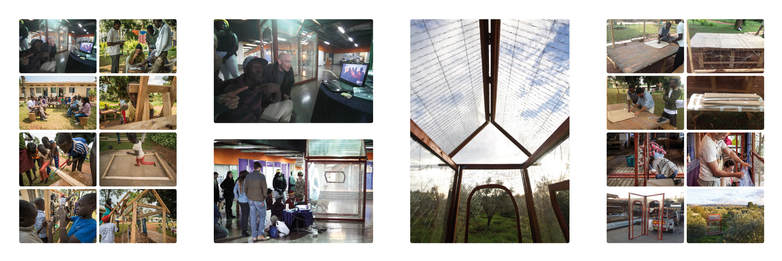|
(Statement) -- In this exhibition, 8000 paper clips and one Skype call, Raffael Lomas explores new forms of “social practice”, a practice that could be defined as a socially engaged art, developed through collaboration, participation, dialogue and immersive experiences. Lomas looks for a way to really impact the refugees lives by going beyond the building of the sculpture, believing that creativity can bring boundless possibilities to create an impact on humanity by working with these refugees and with organizations within their community to affect change. Within this context, the exhibition acts as a multi-medium guide to express the story of the project and a glimpse into the life of a refugee, with the aim to emphasize the barriers that have been broken during the project in its entirety. The 8000 paper clips and one Skype call project demonstrates that creative engagements and innovative efforts can equate to tangible value and meaningful donation, by shining a powerful light and beckoning the question of how one can bridge the gap between the art world with social activism. We can affirm that Art can be a practical tool to be used to bring social impact and to promote other ways of participation and transformation, by creating new approaches of relations between art, society and life and by proposing artistic thinking to challenge the field within which it operates. The short documentary 8000 paper clips and one Skype call, by photographer and filmmaker Nitsan Tal, portrays the whole process of this project. Olga Sureda. Artistic Director & Curator / 8000 paper clips & one Skype call A Project by Raffael Lomas The New Americans Museum, San Diego (U.S.A) August 2016 <<<<< (Curatorial text) -- In 2011 a group of young South Sudanese refugees, some born in Israel, were deported from Israel when South Sudan declared its independence. TED Fellow and renowned Israeli artist Raffael Lomas came upon this unique situation that immediately inspired him to develop a project, when he also found out that Come True, an Israeli non-profit organization, was providing personal sponsorship to the deported children, allowing them safe life and education in Uganda. In his first trip to Uganda in 2014, Raffael Lomas met the student refugees, becoming aware immediately that deportation had a grave impact on the children with a loss of community and blurred their sense and understanding of a home. Together Raffael with the group of children created a unique art installation of a house made by 8000 paperclips. The foundation for the project was to create a method utilizing artistic and creative tools in order to bring about a social change. Yet, the goal was to have the piece be mobile friendly in order to rebuild it in Israel and skype the community they were forced to leave in Israel. On January 23rd 2015 at 10 am, a skype call was scheduled around the art installation house, between the refugees and their friends, sponsors, ex-teachers, and family, in Tel Aviv. The reenactment of the sculpture and the art collaboration was a stepping stone which lead Raffael to travel again to Uganda (Jan 2016) to make a new collaboration happen: Lomas took a group of the Come True youth to Namatumba, a small town, where they volunteered with the community, helping to renovate the local school, teaching the Abuyudia Hebrew and basic Jewish concepts and engaging in other social activities. Trough their knowledge and volunteering as teachers, they helped to bridge cultural gaps in epic proportions, an example that projects can evolve into a multi layer system with branches gasping for more light. After returning from his second trip in Uganda and carrying with him all these experiences and complicities, Raffael made contact with The Partnership for the Advancement of New Americans (PANA), a nonprofit public policy hub based in San Diego (U.S) dedicated to advancing the full economic and social inclusion of refugees. Reason whereby he got to another step of the project, this time happening in San Diego, California. Lomas believes that creativity brings boundless possibilities to create an impact on humanity by working with them or with organizations in their community to affect change. Art can be a practical tool to be used to bring social impact. It bridges the gap between the human emotional experience and the force which drives one to act. Within this context, the exhibition acts as a multi-medium guide to express the story of the project and a glimpse into the life of a refugee. As a chapter comes to an end, the art installation 8000 paper clips will be auctioned off and all proceeds will return to the group of young refugees. Thus, the project monumentalizes that creative and innovative efforts can equate to tangible value and meaningful donation. This project shines a powerful light and beckons the question of how one can bridge the gap between the art world with social activism. Socially engaged art can ignite outrage demanding for change, and providing a platform for reflection, building community and collaboration. While some artists use traditional forms of visual, literary, or performing arts to make work that comments on, responds to, or advocates for the need for change, others are exploring new forms of “social practice” that engages communities in an interactive exchange. In the latter category, an artwork might take the form of a store, a garden, a meal, a website, a street performance, a story exchange or, in this case, a house made of paperclips. Socially engaged art can ignite outrage demanding for change, and providing a platform for reflection, building community and collaboration. Raffael Lomas does not close his eyes neither leads a revolution, but rather assumes an ethical responsibility through his work. With 8000 Paper Clip’s project, he explores new forms of “social practice” and promotes other ways of participation and transformation, by creating new approaches of relations between art, society and life and by proposing artistic thinking to challenge the field within which it operates. >>> See PROJECT |

